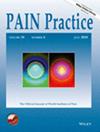Semi‐invasive therapies for pain in knee osteoarthritis: A systematic review and network meta‐analysis
IF 2.7
3区 医学
Q2 ANESTHESIOLOGY
引用次数: 0
Abstract
BackgroundThe increasing number of semi‐invasive pain therapies in knee osteoarthritis poses challenges in decision‐making. This review aimed to simultaneously compare established intra‐articular therapies with newer peri‐articular therapies and explore effect modifiers.MethodsRandomized controlled trials were searched from five electronic databases without date or language restrictions. Study selection and data extraction of reports, retrieved up to May 2024, were performed independently by paired assessors. The primary outcome was 6‐month pain score. Nine treatments were included. The effect size (ES) for each treatment, relative to placebo, was estimated using standardized means difference and expressed with 95% confidence intervals (CI). The rigor of results was evaluated with subgroup/sensitivity analyses.ResultsA total of 111 studies (14,695 participants) were included, with intra‐articular hyaluronic acid having the greatest number of participants. Neuroablation demonstrated the greatest ES (1.08, 95% CI: 0.07, 2.10). While platelet‐rich plasma (PRP) ranked second (ES: 0.75, 95% CI: 0.28, 1.22), it was the only intervention demonstrating statistically significant effect at 3, 6, and 12 months. However, this statistical significance was lost in some sensitivity analyses. Larger estimates for biologics and PRP compared with prolotherapy, steroid, and hyaluronic acid injections were consistently observed across different timepoints and in multiple sensitivity analyses. Generally, no statistically significant difference was found between the nine types of therapies.ConclusionAlthough there is robust evidence suggesting greater efficacy of PRP, potentially including biologics, over other interventions, future research is needed to identify the phenotype or patient subgroup that would benefit most from PRP.治疗膝关节骨关节炎疼痛的半侵入性疗法:系统综述和网络荟萃分析
背景膝关节骨关节炎的半侵入性疼痛疗法越来越多,给决策带来了挑战。本综述旨在同时比较既有的关节内疗法和较新的关节周围疗法,并探讨效果调节因素。方法在五个电子数据库中检索随机对照试验,无日期或语言限制。截至 2024 年 5 月检索到的研究选择和报告数据提取均由配对评估员独立完成。主要结果为 6 个月的疼痛评分。共纳入九种治疗方法。每种疗法相对于安慰剂的效应大小 (ES) 采用标准化均值差估算,并用 95% 置信区间 (CI) 表示。结果 共纳入了 111 项研究(14,695 人参与),其中关节内透明质酸的参与人数最多。神经消融的ES值最大(1.08,95% CI:0.07,2.10)。富血小板血浆 (PRP) 排名第二(ES:0.75,95% CI:0.28,1.22),是唯一一种在 3、6 和 12 个月时具有显著统计学效果的干预方法。然而,在一些敏感性分析中,这种统计学意义消失了。在不同的时间点和多个敏感性分析中,均持续观察到生物制剂和 PRP 与增殖疗法、类固醇和透明质酸注射相比,具有更大的估计值。结论虽然有确凿证据表明 PRP(可能包括生物制剂)比其他干预措施具有更高的疗效,但未来仍需开展研究,以确定从 PRP 中获益最多的表型或患者亚群。
本文章由计算机程序翻译,如有差异,请以英文原文为准。
求助全文
约1分钟内获得全文
求助全文
来源期刊

Pain Practice
ANESTHESIOLOGY-CLINICAL NEUROLOGY
CiteScore
5.60
自引率
3.80%
发文量
92
审稿时长
6-12 weeks
期刊介绍:
Pain Practice, the official journal of the World Institute of Pain, publishes international multidisciplinary articles on pain and analgesia that provide its readership with up-to-date research, evaluation methods, and techniques for pain management. Special sections including the Consultant’s Corner, Images in Pain Practice, Case Studies from Mayo, Tutorials, and the Evidence-Based Medicine combine to give pain researchers, pain clinicians and pain fellows in training a systematic approach to continuing education in pain medicine. Prior to publication, all articles and reviews undergo peer review by at least two experts in the field.
 求助内容:
求助内容: 应助结果提醒方式:
应助结果提醒方式:


